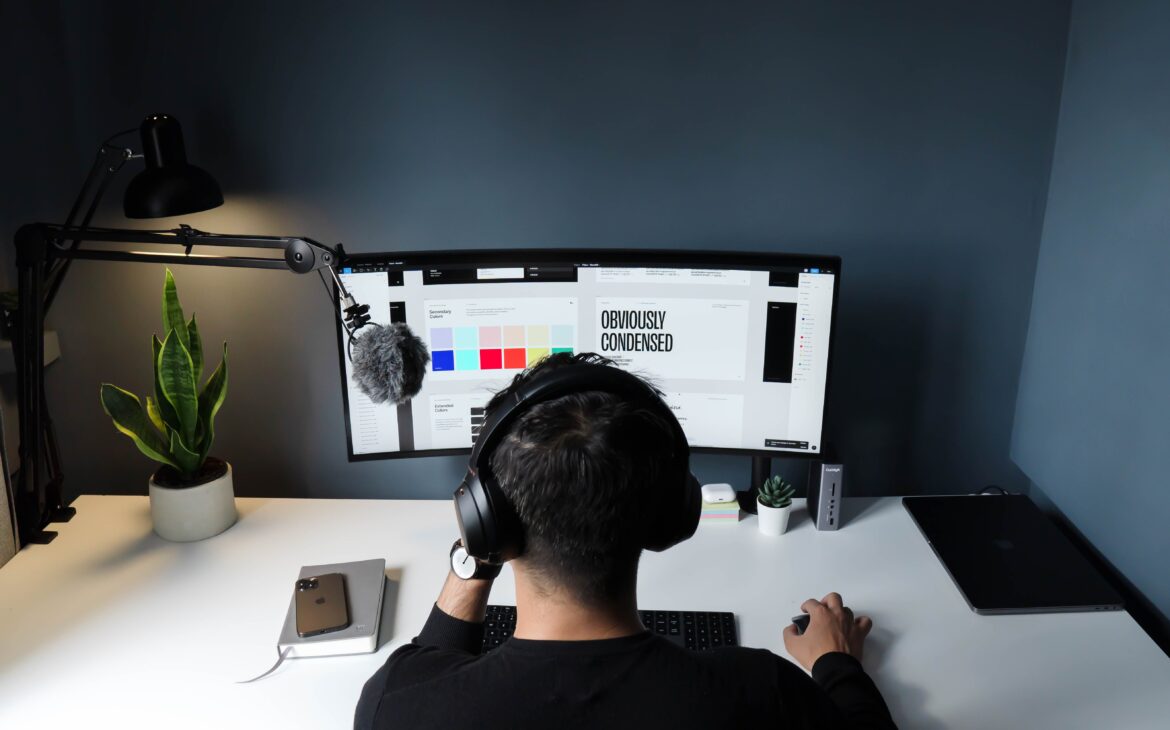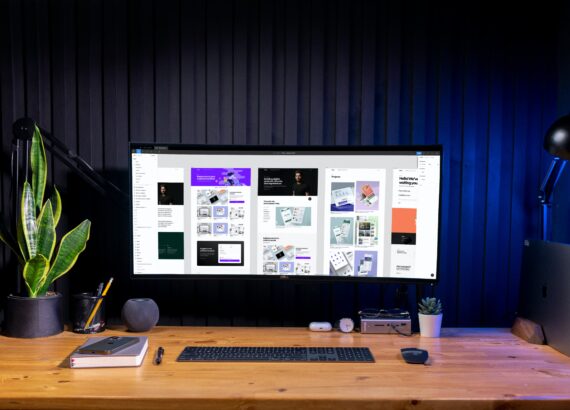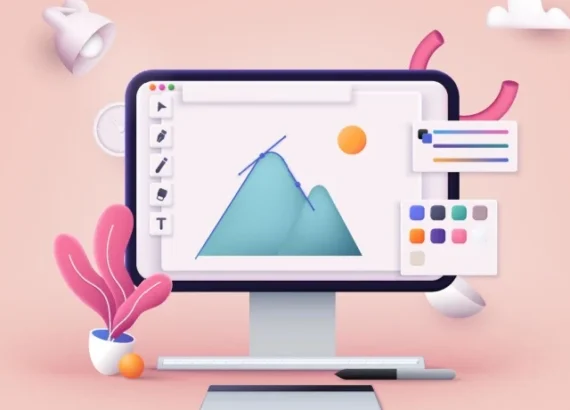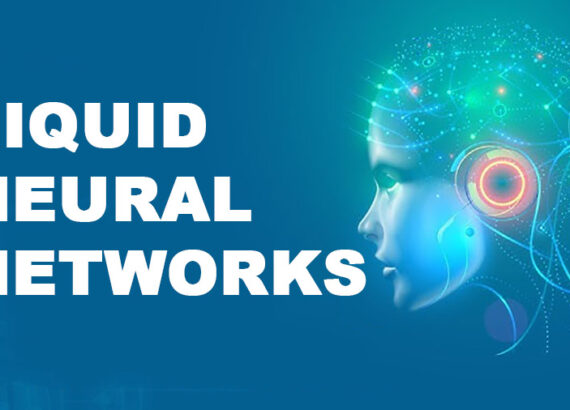Unlocking the Power of Visual Storytelling: The Magic of Graphic Design
Visual storytelling has become an integral part of communication and marketing strategies across various industries. In an era where attention spans are shorter than ever, the power of visual elements to capture and engage an audience cannot be underestimated. Graphic design, as the art of visual communication, plays a crucial role in unlocking the potential of visual storytelling.
By combining compelling visuals, strategic use of colour and typography, and effective layout and composition, graphic design can convey narratives, evoke emotions, and leave a lasting impact on viewers. This article explores the magic of graphic design in unlocking the power of visual storytelling, delving into the fundamentals, techniques, and case studies that showcase the transformative capabilities of this art form.
1. Introduction: The Impact and Importance of Visual Storytelling
Why Visual Storytelling is Essential in Communication
In a world bombarded with information, visual storytelling is like a superhero cape for communication. It’s the secret weapon that grabs attention and keeps it locked in. Humans are wired to respond to visuals, whether it’s a stunning photograph, a beautifully designed infographic, or a cleverly crafted illustration. By harnessing the power of visuals, we can communicate ideas, evoke emotions, and connect with audiences in a way that words alone simply can’t replicate.
The Power of Visuals in Capturing Attention
Let’s face it, attention spans these days are shorter than a goldfish’s memory (yes, that’s true!). In this digital age where we’re constantly scrolling and swiping, capturing attention is like snagging a unicorn by the tail. Visuals can cut through the clutter and make an instant impact. They’re like the shiny objects that demand our attention and draw us in. So, if you want to grab someone’s eyeballs (figuratively, of course), visual storytelling is the secret sauce you need.
2. Understanding the Fundamentals of Graphic Design
Definition and Purpose of Graphic Design
Graphic design is like the masterful puppeteer behind the scenes, pulling the strings to create visual magic. It’s the art of combining text, images, and other visual elements to communicate a message effectively and aesthetically. Whether it’s designing a logo, crafting a brochure, or creating a website, graphic design serves a purpose beyond just looking pretty. It’s all about creating a visual language that captures attention, communicates clearly, and leaves a lasting impression.
Key Principles and Elements of Graphic Design
Just like a good recipe needs the right ingredients, graphic design relies on key principles and elements to make its delicious concoction. From colours and typography to layout and composition, these elements work together in harmony to create visually compelling designs. And let’s not forget about principles like balance, contrast, and unity—they’re the secret spices that add flavour and personality to the mix. Understanding these fundamentals is like having the secret recipe to designing success.
3. Crafting Compelling Visual Narratives: Elements and Principles of Graphic Design
Think of composition and layout as the architects of visual storytelling. They’re the masterminds behind the arrangement of elements on a canvas, guiding the viewer’s eyes and creating a narrative flow. From the placement of images and text to the use of white space, every decision in composition and layout plays a role in telling a story. It’s like choreographing a dance—each move contributes to the overall performance.
Incorporating Balance, Contrast, and Unity in Graphic Design
Balance, contrast, and unity are the secret weapons for creating jaw-dropping designs that make people go “wow.” Balance ensures that elements are distributed evenly, creating stability and harmony. Contrast brings excitement and visual interest by playing with opposing elements—light and dark, big and small, loud and quiet. Unity ties everything together, creating a cohesive and visually pleasing experience. So, whether you’re designing a poster or a website, these principles will make your work sing.
The Role of Proximity and Alignment in Visual Storytelling
Proximity and alignment are like the trusty sidekicks of graphic design. Proximity groups related elements together, making it easier for the viewer to understand their relationship. It’s like a visual cue that tells your brain, “Hey, these things go together!” Alignment, on the other hand, keeps everything in order and prevents chaos. It’s like the invisible hand that guides your eye along a path. Together, these dynamic duos ensure that your visual story is clear, organized, and easy to follow.
4. Tools and Techniques for Effective Graphic Design
Exploring Design Software and Tools
Graphic design software is like a magician’s toolkit, full of tricks and wonders to bring your ideas to life. From Adobe Creative Suite to Canva and everything in between, there are tools for every skill level and budget. Whether you’re a seasoned pro or a design newbie, these software and tools can help you create stunning visuals that make your audience g.
Understanding the Design Process: From Concept to Execution
The design process is like a rollercoaster ride—full of twists, turns, and sometimes a little bit of screaming. It starts with a spark of an idea and takes you on a journey of brainstorming, sketching, refining, and finally, executing your vision. Understanding this process is like having a roadmap to guide you through the creative chaos.
Incorporating User Experience (UX) Design Principles
User experience (UX) design is the secret ingredient that takes your design from good to extraordinary. It’s all about creating designs that not only look visually appealing but also work seamlessly for your audience. By understanding how people interact with visuals, you can craft designs that are intuitive, user-friendly, and delightful to use. So, don’t forget to sprinkle a little UX magic into your graphic design recipe.
And there you have it—the magic of graphic design, unlocked and ready to dazzle. So go forth, embrace your inner visual storyteller, and create designs that make people say, “Wow, that looks awesome!”Graphic Design
5. The Role of Color, Typography, and Layout in Visual Storytelling
Harnessing the Psychology of Color in Graphic Design
When it comes to graphic design, colour isn’t just about making things pretty, it’s a powerful tool that can evoke emotions and tell stories. From the warm hues that create a sense of comfort to the bold and vibrant colours that command attention, understanding the psychology of colour can make or break your visual storytelling. So, next time you’re designing, think beyond the aesthetics and ask yourself, “What emotions do I want to convey to my audience?” Then, choose your colour palette wisely.
Choosing Effective Typography for Storytelling
Typography is more than just picking a fancy font; it’s about choosing the right typeface to communicate your message effectively. Whether it’s a whimsical script for a children’s book or a clean and modern sans-serif for a corporate brand, typography sets the tone and personality of your visual story. So, take the time to experiment with different typefaces and find the one that truly complements your narrative.
Creating an Impactful Visual Hierarchy and Layout
Imagine telling a story without any structure or organization. It would be chaotic and confusing, right? The same goes for graphic design. To create a compelling visual story, you need to establish a clear hierarchy in your layout. Use size, colour, and placement to guide your audience’s attention and lead them through your narrative. Remember, a well-structured layout not only enhances the readability of your design but also makes it more visually engaging.
6. Creating Emotion and Engagement through Graphic Design
Eliciting Emotional Responses through Visuals
Graphic design is a language of emotions. By carefully selecting images, colours, and typography, you can evoke specific feelings in your audience. Whether you want to inspire, excite, or even make them shed a tear, knowing how to tap into the emotional side of your audience can take your visual storytelling to the next level. Just remember, emotions are like spices – a little goes a long way, so use them strategically.
Incorporating Storytelling Techniques in Design
At its core, graphic design is storytelling. So, why not borrow some techniques from the world of literature? From using a narrative arc to creating plot twists, incorporating storytelling elements in your design can make it more engaging and memorable. Think of your design as a mini-story, and let your creativity run wild as you captivate your audience with your visual tale.
Using Visual Metaphors to Connect with the Audience
A picture is worth a thousand words, and a well-executed visual metaphor can speak volumes. By using familiar symbols or clever imagery, you can instantly communicate complex ideas and establish a connection with your audience. So, when words fail to convey your message, let visual metaphors step in and do the talking. Just make sure your metaphors are relatable and clear, or you might end up confusing your audience instead.

7. Case Studies: Successful Examples of Visual Storytelling through Graphic Design
Case Study 1: How Brand X Utilized Visual Storytelling to Increase Engagement
In this case study, we delve into the journey of Brand X and how they harnessed the power of visual storytelling to captivate their target audience. From their clever use of colour to their innovative layout choices, we uncover the secrets behind their skyrocketing engagement and learn valuable lessons that can be applied to any brand looking to make a lasting impact.
Case Study 2: The Impact of Visual Storytelling in Non-Profit Organizations
Visual storytelling has proven to be a game-changer for non-profit organizations, helping them raise awareness, mobilize support, and ultimately make a difference. In this case study, we explore how various non-profits have effectively utilized graphic design to convey their missions, connect with their donors, and garner the support they need to change the world.
Case Study 3: The Role of Graphic Design in Building a Strong Brand Identity
Your brand is more than just a logo; it’s a story waiting to be told. In this case study, we delve into the world of brand identity and how graphic design plays a pivotal role in shaping it. We analyze the strategies employed by successful brands to create cohesive visual narratives that resonate with their target audiences, leaving a lasting impression and establishing brand loyalty.
8. The Future of Graphic Design in the Digital Age
Emerging Trends and Technologies in Graphic Design
From augmented reality to responsive design, new tools and techniques are constantly reshaping the industry. In this section, we explore the latest trends and technologies that are revolutionizing graphic design and discuss how designers can adapt and stay ahead in this ever-evolving digital landscape.
Adapting to the Evolving Landscape of Graphic Design
With the rise of social media, mobile devices, and other digital platforms, graphic design has expanded its reach and potential. In this section, we discuss the importance of adapting to the changing demands of the digital age. From designing for different screen sizes to optimizing user experience, we provide insights and tips on how to thrive in this new era of graphic design while staying true to the power of visual storytelling.
Conclusion
In conclusion, graphic design holds the key to unlocking the power of visual storytelling. By understanding the fundamentals, incorporating key elements and principles, and utilizing the right tools and techniques, designers can craft compelling narratives that captivate and engage audiences. The role of colour, typography, and layout cannot be underestimated in creating impactful visual stories.
Through the case studies presented, we have witnessed the successful application of graphic design in various contexts, demonstrating its ability to leave a lasting impression and build strong brand identities. As we venture into the future, the dynamic landscape of the digital age opens up new possibilities and challenges for graphic design. By embracing emerging trends and technologies, designers can continue to push the boundaries of visual storytelling and create immersive experiences for their audience.
FAQ
1. How important is graphic design in visual storytelling?
Graphic design plays a vital role in visual storytelling as it helps convey narratives, evoke emotions, and capture the attention of the audience. Through the use of compelling visuals, strategic colour and typography choices, and effective layout and composition, graphic design enhances the storytelling experience and makes it more impactful.
2. Can I create visual stories without professional graphic design skills?
While professional graphic design skills can certainly elevate the quality and impact of visual storytelling, it is still possible to create compelling visual narratives without extensive design knowledge. There are user-friendly design tools and resources available that can help individuals without a design background create visually appealing and engaging content.
3. How can graphic design help in building a strong brand identity?
Graphic design is essential in brand identity as it helps visually communicate the values, personality, and essence of a brand. Through the use of consistent visual elements such as logos, colours, typography, and overall design style, the graphic design creates a cohesive and recognizable identity that resonates with the target audience.
4. What are some emerging trends in graphic design for visual storytelling?
Some emerging trends in graphic design for visual storytelling include the use of immersive and interactive elements, such as augmented reality (AR) and virtual reality (VR), to create engaging experiences. Additionally, the integration of motion graphics and animation adds dynamics and liveliness to visual narratives. Experimentation with unconventional typography and minimalistic design approaches are also gaining traction in creating unique and memorable visual stories.
Thank you for reading 🙂
Get up to 70% Discount on Amazon Electronic Products
If you want to build your website at an affordable price contact: www.nextr.in
Read this: Top 8 Apps Every Entrepreneur Needs


















